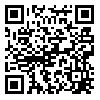Background: In current study, chemical composition and antibacterial activity of leaves and flowers essential oils of Origanum vulgare ssp. gracile against four food-borne pathogens including Escherichia coli, Listeria monocytogenes, Salmonella thyphimurium and Staphylococcus aureus were examined.
Methods: The different organs (leaves and flowers) of O. vulgare ssp. gracile were harvested at flowering stage from wild grown plants in Kurdistan province, Iran. Phytochemical properties of the essential oils were identified by GC and GC/MS analysis. Also, antibacterial effects of O. vulgare ssp. gracile against each bacterial strain were detected by calculating the minimum inhibitory concentration and minimum bactericidal concentration using micro-dilution method. Data was analyzed by chi square and fisher exact tests using SPSS 16.0.
Results: Main components of leaf and flower oils were carvacrol (46.5% and 60.6%), γ-terpinene (13.91% and 16.64%) and ρ-cymene (13.54% and 7.21%). E. coli and S. aureus had similar sensitivity to essential oils, but S. typhimurium showed more sensitivity. Output of composition analysis showed that the O. vulgare ssp. gracile flowers essential oil has more effect than those from leaves.
Conclusion: This work showed substantial inhibitory effect of O. vulgare ssp. gracile essential oils on food-borne pathogens. The efficiency of O. vulgare ssp. gracile flowers oils in reduction of the bacterial activity was higher than the leaves essential oils. According to the results of this research, this essential oil can be utilized as a natural preservative in food products.
Received: 14/10/03 | Accepted: 14/11/26 | Published: 14/12/08
| Rights and permissions | |
 |
This work is licensed under a Creative Commons Attribution-NonCommercial 4.0 International License. |


